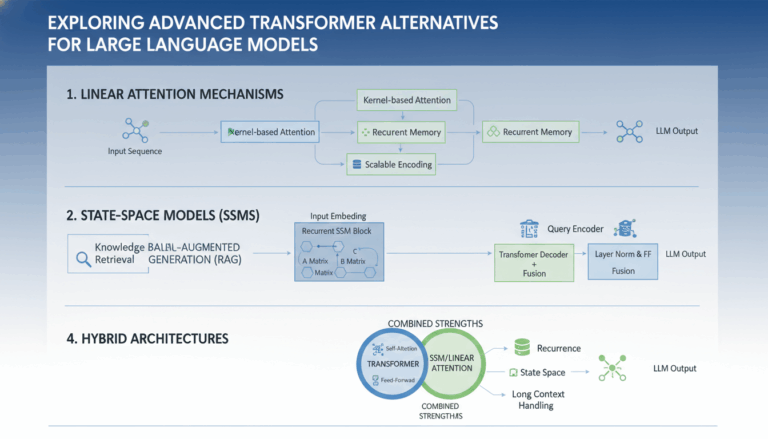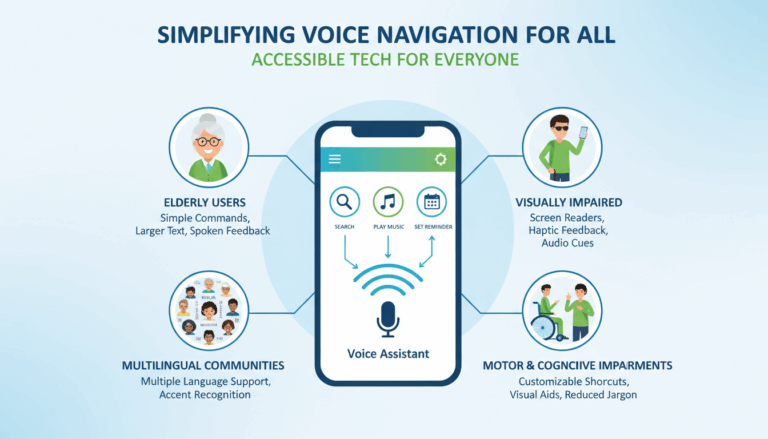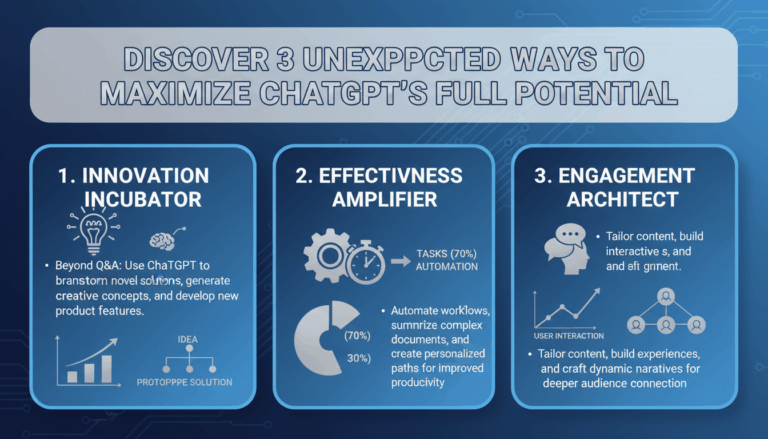Understanding Neural Networks: A Brief Overview
Neural networks are a foundational concept in the field of artificial intelligence and machine learning, inspired by the structure and functioning of the human brain. At their core, neural networks are composed of interconnected layers of nodes, or “neurons,” each designed to process and transmit information. This architecture enables neural networks to identify complex patterns, make predictions, and continuously improve their performance over time.
To understand how neural networks operate, consider the flow of information. The process starts with the input layer, where data is first received. This could range from images, text, or numerical values. The data then travels through one or more hidden layers, where each neuron analyzes input using specific mathematical weights and activation functions. These hidden layers are responsible for capturing intricate relationships and features within the data. Finally, the processed information reaches the output layer, which produces the network’s predictions or decisions—such as classifying an email as spam or not spam, or recognizing handwritten digits.
The strengths of neural networks shine when dealing with large, complex datasets that are difficult for traditional algorithms to interpret. For example, in the field of healthcare, neural networks are being trained to analyze medical images for disease detection, often surpassing the accuracy of human radiologists. A study published by Nature Medicine highlights how neural networks can identify lung cancer in CT scans with remarkable accuracy. In the financial sector, neural networks power fraud detection systems by recognizing subtle patterns in transactional data that might indicate fraudulent behavior, as explained by the IBM knowledge center.
A key advantage of neural networks is their learning capability, enabled by a process called backpropagation. Here’s how it works:
- 1. The network makes an initial prediction based on input data.
- 2. It compares this prediction to the actual outcome and calculates an error value.
- 3. The network then adjusts its internal parameters (weights and biases) to minimize this error in future predictions.
- 4. Through repetition and exposure to more data, the network “learns” and produces increasingly accurate results.
These advancements are not just theoretical—they’re powering the technologies you interact with daily. Voice assistants like Siri and Google Assistant, recommendation engines on Netflix and Amazon, and even self-driving cars all incorporate neural networks at their core. As these algorithms evolve, the real-world applications continue to expand, making neural networks an essential area of study across industries. For a deeper exploration of neural networks, visit the educational resources provided by Google’s Machine Learning Crash Course or the detailed tutorials at Coursera.
Breakthroughs in Neural Network Architectures
Neural network architectures have witnessed tremendous advancement over the past decade, pushing the boundaries of what artificial intelligence can accomplish. Key breakthroughs have emerged through both novel structural designs and practical innovations that overcome traditional limitations.
One pivotal leap was the introduction of Convolutional Neural Networks (CNNs), specifically designed to process image data. Their ability to capture spatial hierarchies in visual information revolutionized computer vision tasks, such as object recognition in the ImageNet competition. CNNs use stacked convolutional layers to successively recognize features from edges to complex shapes, mirroring the human visual cortex. This foundational architecture has since enabled real-world applications ranging from medical imaging diagnostics to self-driving car vision systems.
Another critical development is the rise of Recurrent Neural Networks (RNNs) and their refinements like Long Short-Term Memory (LSTM) networks. Designed for sequential and time-series data, RNNs are capable of learning temporal dependencies, making them indispensable for natural language processing and speech recognition. For instance, modern voice assistants leverage LSTM-based networks to understand and generate human-like responses, parsing context from previous dialogue.
Perhaps the most transformative architecture of recent years is the Transformer model, introduced in the landmark paper “Attention Is All You Need” by Google researchers. By eschewing recurrence in favor of self-attention mechanisms, transformers excel at capturing long-range dependencies and handling vast datasets efficiently. This architecture forms the backbone of today’s leading language models, powering technologies such as machine translation, automated summarization, and advanced chatbots.
Practical breakthroughs also include the advent of Generative Adversarial Networks (GANs). These networks pit two models—the generator and the discriminator—against each other to create highly realistic synthetic data. GANs have found real-world utility in areas like photo-realistic image generation, deepfake video creation, and data augmentation for training other neural networks.
With each new neural network architecture, AI systems become not only more powerful but also more versatile, unlocking applications that reshape industries and solve complex, real-world problems. Understanding these landmark innovations provides valuable insight into where the next breakthroughs may emerge.
Neural Networks in Healthcare: Revolutionizing Diagnosis and Treatment
Neural networks have profoundly transformed the field of healthcare, offering innovative solutions to longstanding challenges in diagnosis and treatment. By leveraging vast amounts of patient data and advanced computational power, these AI-driven systems are improving accuracy, efficiency, and accessibility throughout the medical sector.
Early and Accurate Disease Detection
One of the most impactful achievements of neural networks in healthcare is their ability to detect diseases at an early stage, often before symptoms manifest or traditional methods could identify them. For example, convolutional neural networks (CNNs) analyze medical imaging with impressive accuracy, identifying patterns in X-rays, MRIs, and CT scans that might elude even experienced radiologists. These models are being used to detect cancers such as breast and lung cancer, sometimes reducing false negatives and improving patient outcomes. In some cases, AI has outperformed human doctors in diagnosing certain conditions, showcasing its potential as a powerful diagnostic aid.
The process typically involves several steps:
- Data Collection: Massive datasets of medical images, annotated by experts, are compiled to train the models.
- Model Training: The neural network learns to identify features associated with specific diseases through supervised learning.
- Validation and Fine-tuning: The system is rigorously tested and refined to minimize errors and maximize reliability.
- Deployment: Once validated, these models are integrated into hospital systems to assist clinicians in real-time diagnosis.
Personalized Treatment Recommendations
Beyond diagnosis, neural networks are enabling more personalized treatment plans by analyzing a patient’s unique genetic, lifestyle, and clinical data. Tools such as IBM Watson for Oncology use AI to sift through millions of scientific articles and case studies, matching patients with the most effective therapies. This is particularly impactful in oncology, where genetic and environmental factors can drastically affect treatment outcomes. AI-driven approaches can recommend drug combinations, adjust dosages, and foresee potential drug interactions, ensuring each patient’s care is tailored to their needs.
For example, a typical AI-powered personalized treatment workflow might include:
- Collecting comprehensive patient profiles, including genomics, medical history, and current health data;
- Using neural networks to match patient profiles with successful treatments from global datasets;
- Continuously updating recommendations as new research and patient data become available.
Predictive Analytics for Preventive Care
Neural networks are also powering predictive analytics to anticipate outbreaks and predict an individual’s risk of developing chronic diseases. By analyzing information from wearable devices, electronic health records, and even social determinants of health, AI models can flag high-risk patients for early intervention. For instance, neural networks helped some hospitals predict the severity and spread of COVID-19 outbreaks, guiding both hospital resource allocations and public health policies.
Real-world applications include:
- Aggregating and analyzing continuous streams of patient sensor data from wearables to detect trends before symptoms escalate;
- Utilizing neural networks to assess hospital readmission risks and optimize post-discharge support;
- Supporting clinicians in making proactive, rather than reactive, decisions regarding patient care.
As neural networks continue to evolve, healthcare professionals and patients alike stand to benefit from more precise diagnostics, customized therapies, and proactive intervention strategies. The integration of AI is not without ethical and regulatory challenges, but its potential to reshape medicine is profound, driving the industry towards a future where technology and human expertise work together for better health outcomes.
Transforming Transportation: Neural Networks and Self-Driving Cars
The influence of neural networks on self-driving cars underscores a profound shift in the world of transportation. Neural networks, with their unparalleled ability to process complex data, have become the backbone of autonomous vehicles, allowing them to interpret their environment, make real-time decisions, and continuously improve their driving capabilities.
The Core Role of Neural Networks in Perception
At the heart of every self-driving car are powerful neural networks designed to replicate human perception. These networks process countless data points from sensors such as cameras, lidar, and radar. For example, a camera feed is analyzed by a convolutional neural network (CNN) to identify lane markings, traffic lights, pedestrians, and other vehicles. This process, known as computer vision, enables the vehicle to “see” and interpret its surroundings, mimicking the capabilities of a human driver. For an in-depth understanding of how neural networks handle perception, explore this article by Nature.
Decision-Making: From Data to Action
Beyond perception, neural networks are integral to decision-making and control. Once an autonomous vehicle’s environment is mapped out, another set of networks—often utilizing reinforcement learning—determines the safest and most efficient course of action. For instance, a model might be trained on millions of driving scenarios to learn when to yield, stop, or accelerate, just as a human would learn through experience. Google’s Waymo project offers a real-world example, where neural networks have been pivotal in reducing accident rates and improving passenger safety through deep learning methods that evolve with each mile driven.
Continuous Learning and Real-World Adaptation
One of the most fascinating aspects of neural networks in self-driving cars is their ability to learn from new data. Every journey contributes to a feedback loop: experiences from one vehicle are shared across a fleet, updating the neural model to handle rare or previously unseen situations. Tesla, for example, utilizes fleet learning, allowing its vehicles to “learn” collectively. This dynamic model adaptation is crucial for scaling autonomous technology to a broader range of scenarios and environments.
Challenges and Ethical Considerations
Despite their progress, neural networks in autonomous vehicles must navigate a host of challenges, such as interpreting unusual objects, handling unpredictable human behavior, or reacting to adverse weather conditions. The field is also abuzz with debates around ethics and safety. Studies by organizations like NHTSA highlight the importance of transparent algorithms and fail-safe mechanisms to ensure public trust and safety.
In summary, neural networks have become the driving force behind the revolution in self-driving technology. By continuously learning and adapting, they are moving the world closer to safer and more efficient travel. As these systems become increasingly sophisticated, their real-world applications will only expand, offering a glimpse into the future of transportation.
Financial Forecasting with Neural Networks: Risk and Opportunity
Neural networks, inspired by the human brain’s interconnected neurons, have become a transformative force in financial forecasting. In today’s volatile global markets, predicting economic trends, asset prices, and risk requires tools capable of processing immense datasets and discovering hidden patterns—capabilities in which neural networks excel.
Financial institutions and analysts utilize neural networks for tasks ranging from stock price prediction to credit scoring. By ingesting vast streams of historical data, such as stock prices, economic indicators, and even news sentiment, these models can detect non-linear relationships that traditional statistical methods might miss. For a foundational understanding of neural network architectures, consider this comprehensive guide from Coursera led by Andrew Ng, a leading AI expert.
Applications and Steps in Financial Forecasting
- Stock Price Prediction: Neural networks can process minute-by-minute trading data to identify trends and momentum shifts. For instance, recurrent neural networks (RNNs) are commonly employed to model time sequences, taking into account the context provided by previous data points. A practical walkthrough can be found in this comparison of ARIMA and LSTM models on Towards Data Science.
- Credit Scoring and Risk Modelling: Financial institutions leverage neural networks to predict the likelihood of loan default, enabling more accurate and ethical lending decisions. By analyzing credit histories, transaction records, and socio-economic variables, these models help institutions minimize risk and identify new opportunities for underserved segments. The Nature article on machine learning in credit risk further explores these techniques.
- Algorithmic Trading: High-frequency trading systems use deep learning models to spot fleeting arbitrage opportunities, balancing risk with the speed of execution. These models continuously adapt to market shifts and can handle high-dimensional data with unprecedented precision. A detailed explanation is available from the Investopedia page on algorithmic trading.
- Portfolio Optimization: By analyzing historical asset correlations and forecasting returns, neural networks assist investors in constructing diversified portfolios that maximize returns and minimize risk. Techniques like deep reinforcement learning are increasingly influential, as described in this in-depth portfolio management tutorial.
Challenges, Risks, and Opportunities
While neural networks offer substantial advantages in financial prediction, they are not without risks. One challenge is overfitting—when a model becomes so attuned to historical data that it struggles with new, unseen data. Regularization, dropout techniques, and robust out-of-sample validation are essential defenses against this. Moreover, financial data often suffers from non-stationarity, where underlying statistical properties fluctuate over time. Neural networks must be re-trained and tested periodically with up-to-date data to retain accuracy.
Another significant concern is interpretability. Complex neural networks, especially deep ones, can function as “black boxes,” making it hard to justify decisions to regulators or stakeholders. Explainable AI initiatives, such as those documented by NIST, are making strides in this area, enhancing transparency and trust.
Yet, the opportunities neural networks present in mitigating financial risk and pinpointing profitable trends are immense. Their ability to process alternative data—such as satellite imagery, social media, or weather patterns—opens new frontiers in predictive finance. For ongoing learning, the CFA Institute regularly publishes thought leadership on AI developments in financial analysis.
When adopted with sound governance and continuous oversight, neural networks are not just forecasting the future of finance—they’re actively shaping it.
Enhancing Everyday Technology: From Smart Assistants to Recommendation Systems
Neural networks have revolutionized the devices and applications we rely on every day, making technology not only smarter but also highly intuitive. Their ability to model complex patterns underlies a range of systems, from the personal assistants on our smartphones to the content curation engines that drive our digital experiences.
Smart Assistants: AI That Listens and Learns
Virtual assistants like Google Assistant, Microsoft Cortana, and Apple’s Siri stand as some of the most ubiquitous examples of neural network integration in consumer technology. These assistants utilize speech recognition models powered by deep neural networks to convert spoken language into actionable commands. The process involves:
- Speech Recognition: When you say “What’s the weather today?” to your assistant, a neural network rapidly transcribes your speech, identifying phonemes, syllables, and words based on millions of hours of prior data.
- Natural Language Understanding (NLU): Another neural architecture interprets the meaning behind the words, discerning your intent—whether you’re asking for weather, setting a reminder, or anything else.
- Response Generation: The assistant synthesizes a response, applying context learned from previous interactions. This continuous learning loop allows virtual assistants to improve in accuracy, speed, and personalization, making them increasingly indispensable.
For a deeper dive into the technology behind these interactions, explore this research from Google AI Blog on the latest advances in voice assistant AI.
Recommendation Systems: Personalized Content Engines
Neural networks power recommendation engines that shape nearly every online experience—from the movies suggested on Netflix to the products highlighted on Amazon. Using collaborative filtering and deep learning, these systems deliver targeted recommendations by analyzing vast quantities of user behavior and preferences.
The process behind these systems typically includes:
- Data Collection: The system aggregates user activity—search terms, clicks, watch time, purchase history—creating a rich behavioral profile.
- Pattern Discovery: Neural networks process this data alongside thousands of others, detecting subtle correlations (for example, people who watch science fiction movies may also enjoy space documentaries).
- Real-Time Personalization: As you interact, the system updates its recommendations instantly. This allows for dynamic content feeds tailored to your current interests.
To learn more about the mechanisms and research behind these systems, visit this detailed analysis from MIT Technology Review on Netflix’s deep learning approach to recommendations.
Real-World Impact: Everyday Value and Innovation
These technologies are not just theoretical—they profoundly impact daily life:
- Making Life Easier: Smart assistants help manage schedules, answer questions, and control smart homes, all hands-free.
- Curating Experiences: Recommendation engines ensure users discover relevant books, music, or shopping deals tailored to their tastes, enhancing engagement and satisfaction.
- Driving Industry Innovation: By employing neural networks, companies stay competitive, providing features and conveniences unimaginable a decade ago.
For more on how neural networks influence daily technology, consider MIT’s resources on everyday deep learning applications: Deep Learning at MIT.



